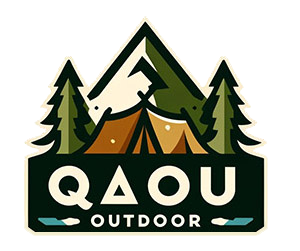How Deepfake Technology is Changing Wildlife Documentaries
Wildlife documentaries have long captivated audiences by bringing the natural world into our homes, showcasing breathtaking landscapes and elusive species. However, with the rise of artificial intelligence and deepfake technology, the way these documentaries are produced is rapidly evolving. While deepfakes have been controversial in politics and entertainment, they are also being used in fascinating and innovative ways to enhance nature storytelling.
1. Creating Hyper-Realistic Animal Reconstructions
Deepfake technology, which involves using AI to generate highly realistic synthetic media, is now being employed to recreate extinct, endangered, or rarely seen species with unprecedented accuracy. By training AI on thousands of real-life images and videos, filmmakers can generate lifelike footage of animals that might otherwise be impossible to capture.
For example, some nature documentaries have started using AI-generated imagery to recreate extinct species like the dodo or woolly mammoth, allowing viewers to see how they may have moved and behaved in their natural habitats. Similarly, for extremely elusive species, like the snow leopard or the Saola (also known as the ‘Asian unicorn’), deepfake-assisted rendering can help depict their lives more vividly without disturbing their habitat.

2. Enhancing Conservation Awareness
One of the biggest challenges in conservation is getting people to emotionally connect with species at risk of extinction. Deepfake technology can be used to simulate scenarios where wildlife interacts with changing environments, helping audiences visualize the impact of climate change, deforestation, or poaching in real time.
For instance, a documentary could use AI to simulate how a rainforest would look over 50 years as deforestation progresses, showing animals gradually disappearing from the landscape. This technique has already been tested in climate change documentaries where AI projects the long-term effects of rising temperatures on fragile ecosystems.
3. Reconstructing Historical Wildlife Footage
Deepfake AI is also helping to restore and enhance old wildlife footage that was previously unusable due to grainy quality, poor lighting, or missing segments. AI algorithms can upscale low-resolution footage to 4K or even 8K, making historic nature films more immersive than ever.
For example, archival footage of Sir David Attenborough’s early wildlife documentaries has been enhanced using AI to refine colors, improve sharpness, and even recreate missing frames. This not only preserves the legacy of pioneering wildlife filmmakers but also makes their work more accessible to modern audiences.
4. Minimizing Human Disturbance in the Wild
Traditional wildlife documentaries often require film crews to spend months or even years in remote locations, which can unintentionally disrupt animal behavior. By leveraging deepfake technology, filmmakers can create ultra-realistic animal sequences without intrusive human presence.
For example, AI-generated footage can fill in missing gaps in a documentary when animals are not visible or recreate natural interactions without forcing filmmakers to get too close. This means fewer disturbances in fragile ecosystems and less stress on endangered species.

5. Ethical Considerations: Balancing Realism with Transparency
While deepfake technology opens exciting new possibilities, it also raises ethical concerns. If AI-generated content is not clearly labeled, it could mislead audiences into believing fabricated wildlife interactions are real.
To address this, many filmmakers are advocating for clear disclosure whenever AI is used to enhance or generate footage. Some wildlife productions now include on-screen labels or behind-the-scenes featurettes explaining how AI was used to augment real footage.
6. The Future of AI in Wildlife Storytelling
As AI technology continues to advance, deepfake tools may soon be able to create entire nature documentaries without ever sending a camera crew into the wild. While this raises questions about authenticity, it also presents opportunities to document hypothetical ecosystems, recreate prehistoric wildlife, and even simulate alien life based on scientific predictions.
Ultimately, deepfake technology is a double-edged sword—it has the potential to revolutionize wildlife filmmaking while also challenging traditional notions of authenticity. As the industry adapts, transparency and responsible storytelling will be key to ensuring that AI remains a force for good in nature conservation and education.
Final Thoughts
Deepfake technology is no longer just a tool for deception—it’s becoming an invaluable asset in wildlife storytelling. From recreating extinct animals to minimizing human disturbance in the wild, AI-driven filmmaking is making nature documentaries more immersive and impactful than ever before.
While ethical questions remain, one thing is certain: AI is set to play a major role in how we document and experience the natural world. The challenge now is ensuring that its power is used responsibly, preserving the integrity of wildlife filmmaking while pushing the boundaries of what’s possible.








